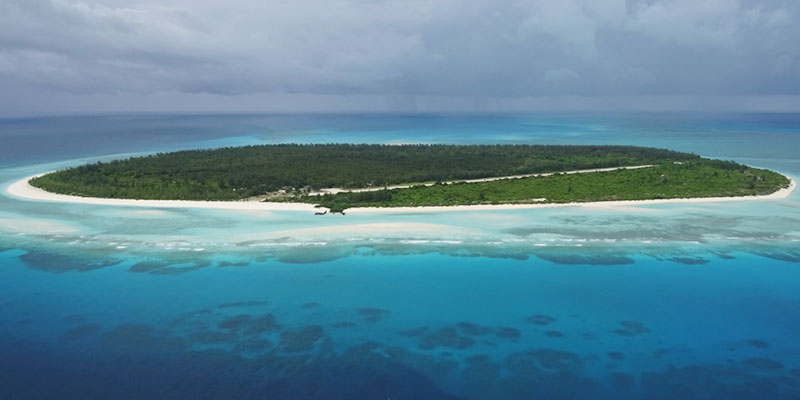- World
- Jun 10
Rate of ocean warming doubles in 20 years
• UN World Oceans Day was celebrated on June 8 at UN Headquarters in New York. It focused on “opening minds, igniting senses, and inspiring possibilities” to protect marine life worldwide.
• With contributions from more than 100 scientists from nearly 30 countries, UNESCO’s State of the Ocean Report 2024 was published with the support of Iceland.
• The report includes threats to the ocean and trends that could help identify drivers of change.
• It warned that the rate of ocean warming has doubled in 20 years and that coastal species are suffocating due to decreased oxygen levels in the ocean, among other things.
State of the Ocean Report 2024
• The State of the Ocean Report has the ambition to inform policymakers about the state of the ocean and to stimulate research and policy actions towards the ocean we need for the future we want.
• The Report aims to support the identification of policy and management priorities and focus areas for research. Its findings should stimulate research and policy actions contributing to the 2030 Agenda, the Climate Change and Biodiversity conventions, and the Sendai Framework for Disaster Risk Reduction.
• Framed around the seven Outcomes of UN Decade of Ocean Science for Sustainable Development (2021-2030), the Report covers physical, chemical and biological parameters describing the state of the ocean, summarises threats posed to the ocean, illustrates access to observation infrastructure, data and information and provides new insights on ocean literacy, indigenous and traditional knowledge.
Key findings of the report:
i) The rate of ocean warming has doubled in 20 years
• While atmospheric temperatures tend to fluctuate, the ocean is steadily and constantly heating up. The State of the Ocean Report indicates that the ocean is now warming at twice the rate it was 20 years ago, with 2023 seeing one of the highest increases since the 1950s.
• While the Paris Agreements pledged to keep global warming below 2°C above pre-industrial levels, ocean temperatures have already increased by an average of 1.45°C, with clear hotspots above 2°C in the Mediterranean, Tropical Atlantic Ocean and Southern Oceans.
• One dramatic consequence of this warming is an increase in sea levels across the globe. The ocean absorbs 90 per cent of the excess heat released into the atmosphere, and as water heats up it expands.
Warming ocean temperatures now account for 40 per cent of the global rise in sea levels, and the rate of rising has doubled over the past 30 years totalling 9 cm.
ii) Coastal species are suffocating from declining oxygen levels
• Since the 1960s, the ocean has lost 2 per cent of its oxygen due to warming temperatures and pollutants, including wastewater and agricultural run-off.
• Coastal areas are especially impacted, with species finding themselves on the frontline of a battle to breathe. Roughly 500 “dead zones” identified where almost no marine life remains due to a dwindling oxygen-content.
iii) Need higher level of regulation in Marine Protected Areas
• Marine forests including mangroves, seagrass plains, tidal marshes are able to absorb up to five times more carbon than forests on land. As well as being vital harbours for biodiversity, they represent one of the best ramparts against global warming.
• However, UNESCO reveals that nearly 60 per cent of countries still do not include marine forest restoration and conservation in their Nationally Determined Contribution plans.
• All biologically-driven carbon fluxes and storage in marine systems that are amenable to management can be considered as blue carbon. Coastal blue carbon focuses on rooted vegetation in the coastal zone, such as tidal marshes, mangroves and seagrasses.
• Marine Protected Areas are known to protect biodiversity, harbouring 72 per cent of the 1,500 endangered marine species on the IUCN Red List. UNESCO’s new data evidences that the higher the level of regulation in a Marine Protected Area, the more it is effective at protecting local ecosystems.
• UNESCO is leading the United Nations Decade of Ocean Science for Sustainable Development, from 2021 to 2030. Since the start of the Decade, more than 500 projects have been launched in all regions of the world and more than a billion dollars has been mobilised to improve knowledge and protection of the ocean.
iv) Ocean acidification threatens marine organisms
• The ocean absorbs around one-quarter of the annual emissions of anthropogenic carbon dioxide (CO2) to the atmosphere, thereby helping to alleviate the impacts of climate change on the planet.
• The cost of this process to the ocean is high, as the absorbed CO2 gas reacts with seawater to change the carbonate chemistry of the ocean. This process is referred to as ‘ocean acidification’ due to the observed decrease in seawater pH.
• Ocean acidification threatens marine organisms and ecosystem services, including food security, by reducing biodiversity, degrading habitats and endangering fisheries and aquaculture.
• The data shows a mean global increase in ocean acidification in all ocean basins and seas. As the acidity of the ocean increases, its capacity to absorb CO2 from the atmosphere decreases, impeding the ocean’s role in moderating climate change.
v) The need for a sustainable ocean economy
• The world will see an additional two billion people in the next 25 years, adding pressure to already impacted food supplies on land and in the ocean. Aquatic foods are a major source of food with 182 million tonnes of aquatic animals and an additional 36 million tonnes of algae used for food and food production. Fisheries and aquaculture production continues to grow, reaching a record of 218 million tonnes in 2021.
• A deeper appreciation and understanding of the role that aquatic foods can play is essential to harness their unique capacity for addressing nutritional, social and environmental food system challenges in the future.
Manorama Yearbook app is now available on Google Play Store and iOS App Store



